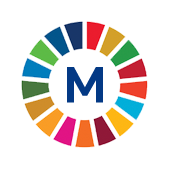 8.7.1 Child labour, by ageMetadataPeriod: Every four yearsYear: 2025 |
 8.7.1 Child labour, by ageMetadataPeriod: Every four yearsYear: 2025 |
| METADATA |
| Indicator information |
| Definition and methodology |
| Data source type and data collection method |
| Notes |
| ID of global indicator |
| Metadata update |
| Global metadata |
| Indicator information | Top |
| Indicator | |
8.7.1 Child labour, by age | |
| Global indicator name | |
8.7.1 Proportion and number of children aged 5‑17 years engaged in child labour, by sex and age | |
| Target | |
8.7 Take immediate and effective measures to eradicate forced labour, end modern slavery and human trafficking and secure the prohibition and elimination of the worst forms of child labour, including recruitment and use of child soldiers, and by 2025 end child labour in all its forms | |
| Goal | |
Goal 8. Promote sustained, inclusive and sustainable economic growth, full and productive employment and decent work for all | |
| Definition and methodology | Top |
| Definition | |
Percentage of children age 5-17 years who are involved in child labour. The child labour module was administered for children age 5-17 and includes questions on the type of work a child does and the number of hours he or she is engaged in it. | |
| Methodological explanations | |
Data are collected on both economic activities (paid or unpaid work for someone who is not a member of the household, work for a family farm or business) and domestic work (household chores such as cooking, cleaning or caring for children, as well as collecting firewood or fetching water). The module also collects information on hazardous working conditions.
The methodology of the MICS Indicator on Child Labour uses three age-specific thresholds for the number of hours a child can perform economic activity without it being classified as in child labour. A child that performed economic activities during the week preceding the survey for more than the age-specific number of hours is classified as in child labour: age 5-11: 1 hour or more, age 12-14: 14 hours or more, age 15-17: 43 hours or more. | |
| Method of calculation | |
The share of children in child labor is calculated as the number of children in child labor (in a specific age group) divided by the total number of children in the population in the same age group. | |
| Unit of measure | |
% | |
| Available disaggregation | |
Age groups | |
| Territorial level | |
Regions | |
| Data source type and data collection method | Top |
| Data source | |
Multiple Indicator Cluster Survey (MICS) | |
| Periodicity of data collection | |
Every four years | |
| Notes | Top |
| ID of global indicator | Top |
C080701 | |
| Metadata update | Top |
| 2/6/2025 | |
| Global metadata | Top |
https://unstats.un.org/sdgs/metadata/files/Metadata-08-07-01.pdf | |